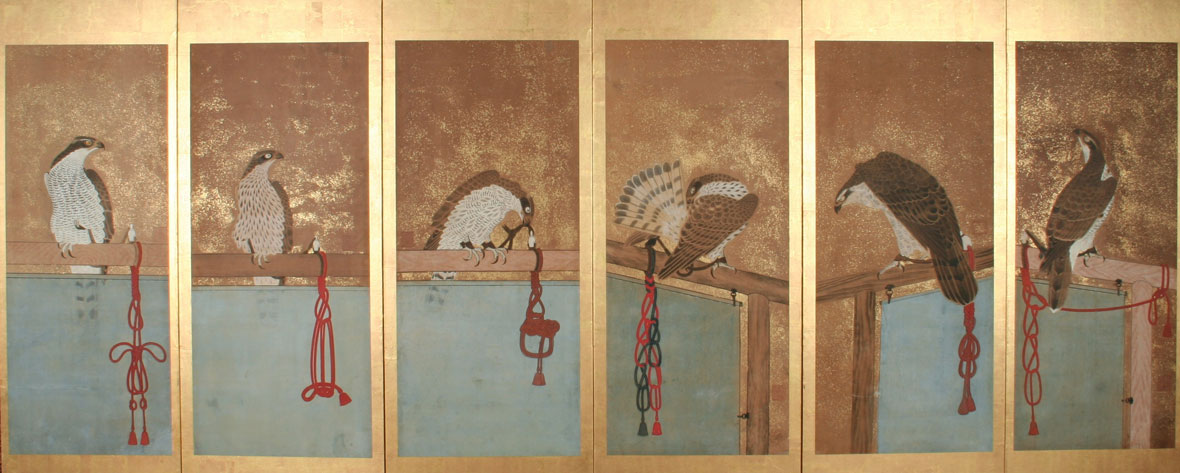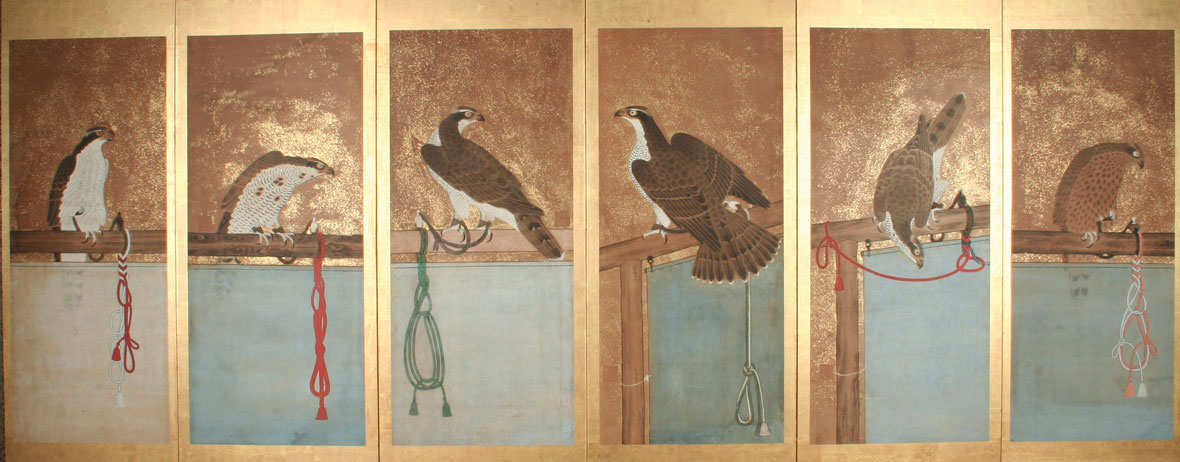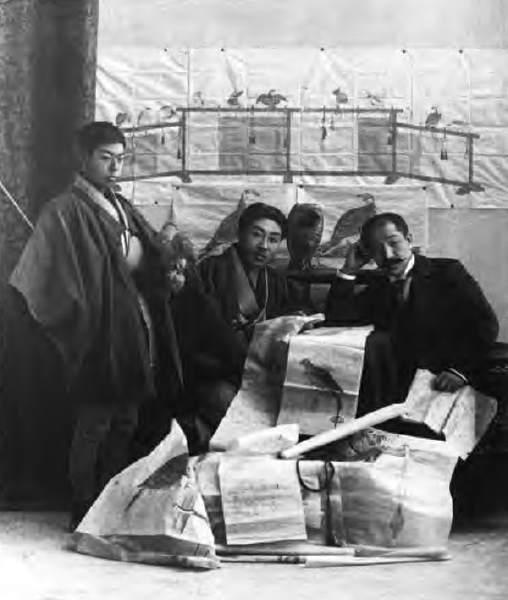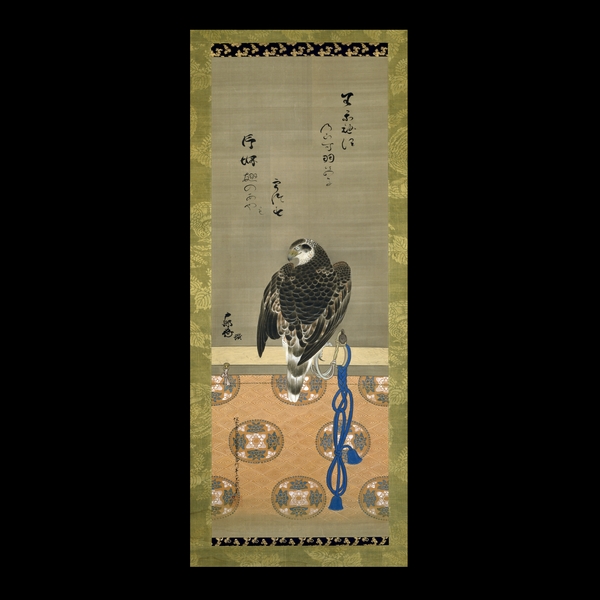A Impressive Pair of Gold-on-Paper Six-Fold Screens
Japan, Late Edo Period, circa 1800
Each paper panel depicting a hawk tethered to a perch, in ink, colour and gold leaf,
signed with a red seal Fujiwara Shokichi
Overall measurement: 56.9 in (144.5 cm) high, 129 ½ in (329 cm) wide
Overall measurement: 56.9 in (144.5 cm) high, 129 ½ in (329 cm) wide
A screen such as this, declaring its owner's interest and involvement with falconry, was a statement of status and authority in 19th-century Japan. From medieval times, falconry was an elitist sport practised by those of wealth, rank and power. Initially the province of the noble class, it was later taken up by the samurai as they rose to prominence. A highly expensive occupation, it was always a symbol of status and the warrior spirit.
With the rising popularity of the sport came artists' portrayals of it and its protagonists. In the early Edo period (1615-1868), many paintings depicting falconry were commissioned by samurai. Images of wild birds of prey were also fashionable, as well as portraits of favoured individual birds.
A pair of hanging scroll paintings from the Edo Period with similar subject matter is held in the British Museum.
With the rising popularity of the sport came artists' portrayals of it and its protagonists. In the early Edo period (1615-1868), many paintings depicting falconry were commissioned by samurai. Images of wild birds of prey were also fashionable, as well as portraits of favoured individual birds.
A pair of hanging scroll paintings from the Edo Period with similar subject matter is held in the British Museum.

















